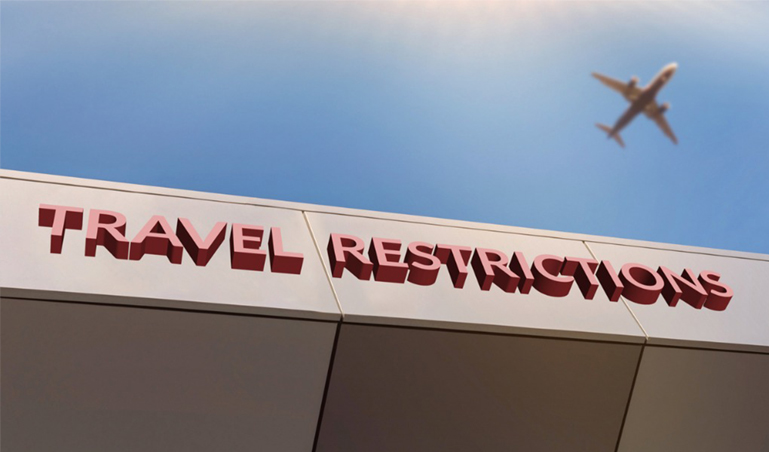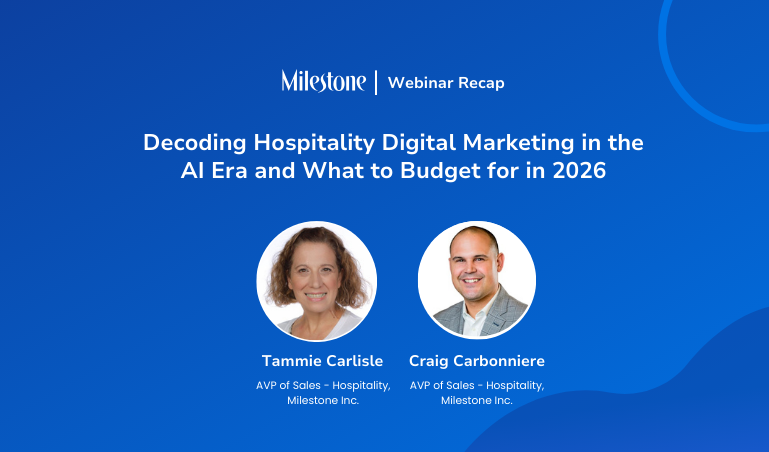Yes, we’re all very excited about the surge in travelers now. As of late July, we’re now seeing more people pass through TSA Checkpoints than we have since October 2020! Traveling is back – for now – but the rules have changed. People want to find local businesses where they can buy online and pickup in-store (BOPIS). Guests expect hotels to be at the same standards as their last experienced before the pandemic. And travelers are getting younger than ever before.
Buy Online, Pickup In-Store (BOPIS)
This concept was a game changer for local businesses. In our study of over 500 location-based websites from January 2020 through June 2021, we have seen a dramatic shift in revenue earned from organic and local channels compared to all other marketing channels. Together these channels have driven nearly 70% of website revenue for location-based businesses.
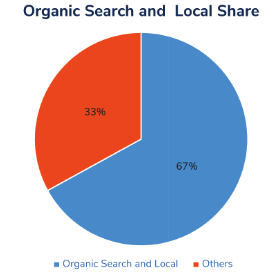
In fact, local search traffic share has now eclipsed its pre-pandemic levels, rising 52% since January 2020. This makes some sense when you consider the resources required to set up these channels, compared to some more resource-intensive channels like paid media. It also makes sense when you consider why consumers would have made this shift – amongst everything else, they want the convenience to buy online and pick up in stores (BOPIS) which can be seen from the meteoric rise in searches during the pandemic.
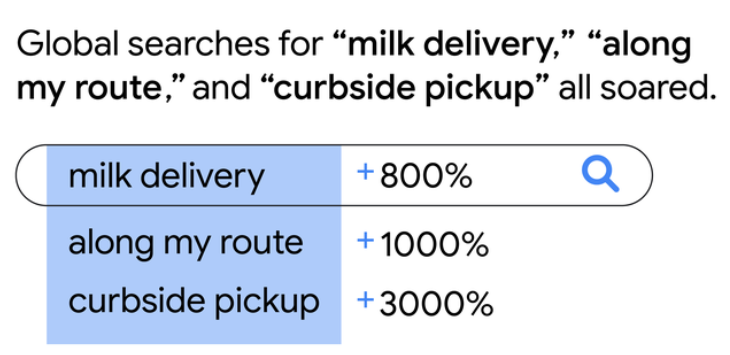
BOPIS is such a critical tool for your customers because it guarantees they’ll get exactly what they want while saving them time. Being able to browse your full inventory, determine what and where the right item is, and quickly pick up on their way to their kids’ little league game can be the make or break for some businesses to earn the sale. While clearly useful for retailers and restaurants, BOPIS is valuable for all industries, even the hospitality industry. To gain incremental revenue, many hoteliers and resort managers are shifting to bring the local market back to their properties using different tactics like offering day rates, dining packages, and cabana rentals.
Are you providing your customers’ with ways to reserve spa or tee times through your website or app? Is your restaurant using QR codes to let guests order food and drinks on their schedule? Can your hotel guest order room service or housekeeping items without picking up the in-room telephone? Of all the changes from the pandemic, BOPIS is surely one that is here to stay.
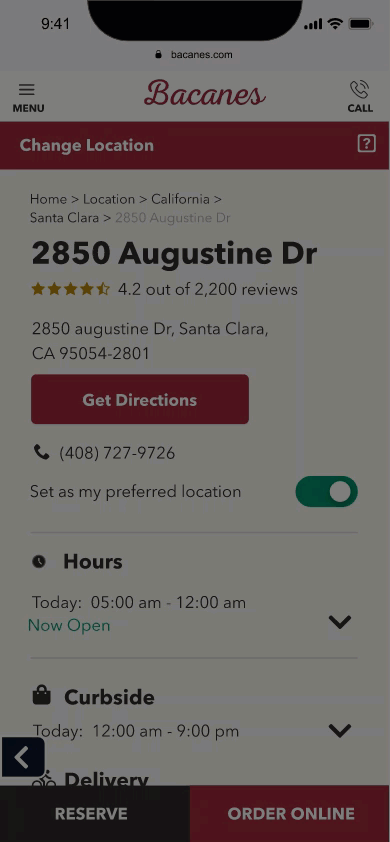
Managing Online Reviews
As we just mentioned, local search is a significant driver of your website traffic and revenue. And local reviews are considered the most useful content potential guests leverage when making their hotel decisions. Are you encouraging your customers to leave reviews, and are you maintaining a presence online to ensure negative reviews have responses?
Before the pandemic, you might have had protocols in place about who, how, and when to respond to hotel reviews. With all the personnel changes that have occurred, are you keeping up with those steps? With the limited resources you have, it’s critical you employ the right tools to make review management easy to do. At Milestone, we ingest reviews from multiple platforms to make it easy for your team to keep up with the responses.

Not every review needs a response, but when 41% of travel decisions are made in response to reviews, it’s important to restart that initiative now. Again, responding to reviews is critical, but the responses don’t have to be the same, canned responses we had before the pandemic. You might not win back the guest who has already traveled, but your empathic and human response to a bad review might woo the next one.
Travelers Are Getting Younger
Another change is who is traveling now. Younger people, with their FOMO and their YOLO, are trying to get in on the newest experience that arose from the ashes of the before pandemic times. With 151 million Gen Z-ers in the United States, this audience now represents over half of the US population. And they have over $350 billion in spending power. Yes, the AAA and AARP special offers are still required, but what are you doing to reach the younger traveler? Of course, they want budget-friendly options, but nearly 40% of all Next-Gen Travelers want “new-to-me experiences.” Are you connecting with your local businesses and incorporating all the nearby unique experiences and popup events they have you’re your website content? Are you creating some unique experiences of your own?
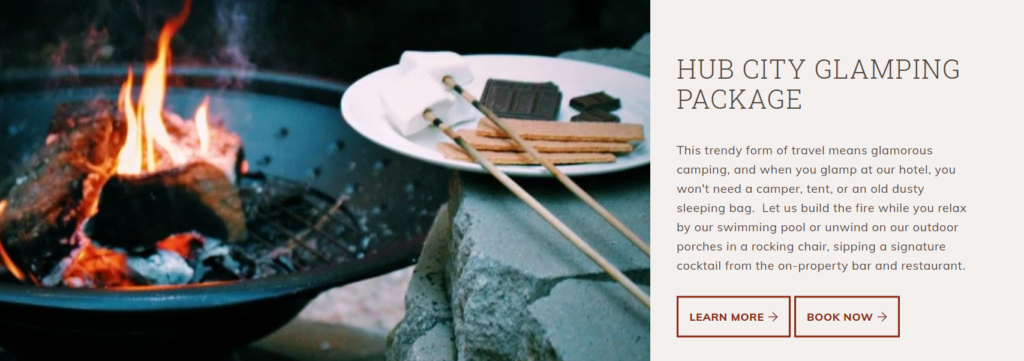
One of our independent hotel customers in Texas unveiled a glamping package this year that combines the trendy, upscale camping experience in a unique way for their guests. This package gives their customers the chance to take those Insta-worthy photos without the hassle of renting and driving an RV to a remote destination. Combined with the SEO-first technology of the Milestone website, their glamping offer details is one of their top 3 most visible offer pages, it has an average organic rank of position 6 and has received more than 5,200 search impressions this year.
Key Takeaways:
The pandemic has impacted nearly every aspect of life. Some of those changes will hopefully end soon, but there are some we expect to stick around. Embrace these new habits with open arms, digitize your in-store shopping experience, encourage and respond to online reviews, and focus on the next generation of travelers to see long-term digital success.
- Nearly 70% of searchers will find your business via Local and Organic Search
- 41% of travel decisions are made by reading local business reviews
- 40% of all travelers are Gen-Z looking for “new-to-me” experiences
If you want help to create a strategy and manage your digital marketing, we are here to help you succeed. Please send us an email at [email protected] or call us at +1 408 200 2211
Useful Resources:
COVID-19 Crisis, Recovery, Growth: Local Search Strategy
Top Tips to Transform Your Local Search
Organic & Local Search Drive 70% of Website Traffic
Ask our experts
-
How do I take advantage of buying online, pick up in store?
With buy online, pick-up in store, you have the opportunity to offer customers the convenience of shopping online while still getting them to set foot physically in your store. Customers appreciate not having to wonder if something is in stock or wandering about your store looking for what they need, and at the same time they do not have to wait or even pay for shipping. This allows them to accomplish their goals faster. Once you get customers in your store you can improve your sales rate with strategies such as:
- Upselling. Encourage customers to make additional purchases to go along with that which they already made.
- Increase impulse buys. You can also encourage customers to buy items unrelated to their existing purchase by strategically placing them, and noting deals and discounts, as customers approach the counter to pick up their selected items.
To make this strategy work well for you, you will want to:
- Make it very clear on the site and in your cart that you offer the pick up in store option as 25% of ecommerce purchases were picked up in store in 2021.
- Make sure your website and mobile app are easy to use and work effectively. When customers appear to pick up their item, you need to make sure it is ready for them.
- Create an excellent warehousing procedure. Make sure items are easy for employees to stock and find so they can fill customers’ orders.
- Make browsing your inventory online simple so customers can find the item they need.
- Have clear lines of communication with everyone involved in the process, from the customers to the UX designer to the checkout associate. Everyone needs to know their role and how to keep the process running smoothly.
-
How do I get started with local optimization?
Local optimization can help your business appear when customers look for a business in your industry within your geographic area. To help improve your local optimization strategy, you want to follow these steps:
- Claim your Google My Business Page. Google uses these pages when ranking local businesses and it is an important part of your local strategy.
- Make sure your Google My Business page has been thoroughly filled out with updated information about your business, what you do for customers, and fresh original pictures of your business and products
- Get your business listed on important vertical search engines for your industry with a consistent name, address, and phone number.
- Cultivate positive reviews by letting satisfied customers know that you appreciate their feedback.
- Reply to posted questions and to feedback.
- Write content and design your site to help people looking for your type of local business. If you target tourists looking for restaurants, for example, offer articles about seeing your area and landmarks they can find around your establishment. If you run a local karate business, publish pieces about preparing for class or what makes your area a great place to learn karate.
Local optimization is about letting Google know that your business is in the area and serves customers well. Following these suggestions should get you off to a good start.
-
How do I attract young tourists?
To attract young tourists you need to first understand the importance of mobile in their online exploration. Millennials and Gen Z are the most active mobile customers on average with more ‘phone unlocks’ than any other generation. When they look for travel accommodations, therefore, they will similarly employ their mobile devices. You want to make sure your website is optimized to function optimally on mobile devices. People need to be able to easily navigate your site and book reservations through your site.
Similarly, you also want to fully engage with your prospects through social media. Young travelers engage heavily on social media. An estimated 97 percent of millennial travelers will update a social network while on a trip, which means that you want your travel business to heavily engage with customers through social media. Social media will play a significant role in every step of the travelers’ experience for younger travelers.
- Instagram and TikTok are more popular with younger travelers, so optimize your profiles and content flow and direct part of your paid media budget there.
- As people travel, they can share their experiences, providing you with user-generated content
- As they research places to visit and stay on their trips, you want your brand well represented
Finally, you want to cultivate a positive online reputation, including ample positive reviews on sites, like Google My Business and TripAdvisor. Asking satisfied customers to leave you reviews can help tremendously.
-
What do young people want in a hotel?
Young travelers visiting a hotel want to see three key features:
- Really fast wifi.
- The ability to get information, service, and support without speaking to a human.
- All top streaming media services as part of the entertainment.
- Pet-friendly policies will be a big draw for many.
- Opportunities for personalized and individualized experiences.
- They want to be able to access the services and extras they appreciate.
- They want to see a user-friendly mobile experience. The ability to ask questions or report problems during their stay right from their device or the option to check in or check out can all help travelers have a mobile-friendly experience.
- Low or no-contact check in and check out.
The key to providing an excellent hotel experience for young travelers lies in understanding the importance of a seamless, mobile-connected experience and providing personalized attention.
